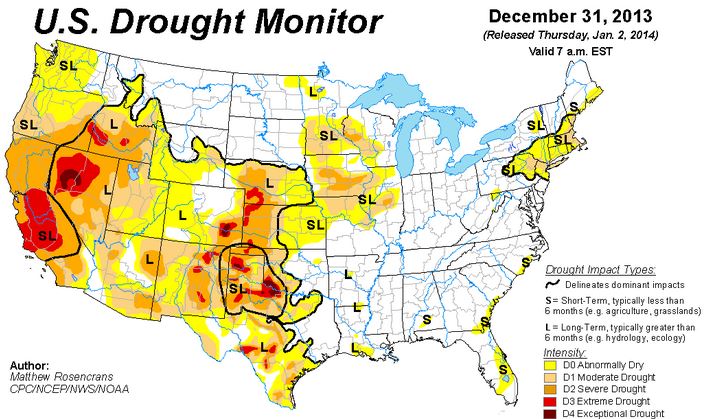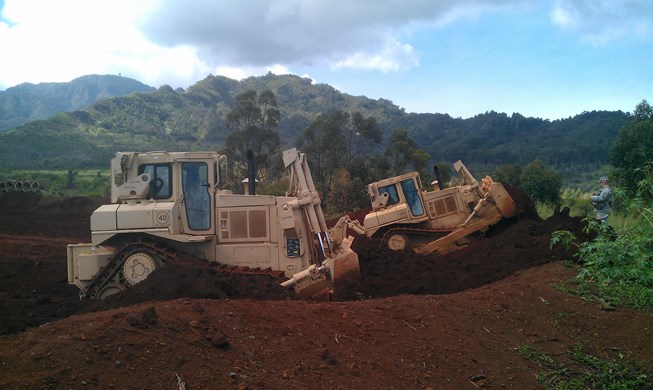New examinations of recordings of radio transmissions on the Yarnell Hill Fire have provided previously unknown information about the location of Eric Marsh during the hour before 19 members of the Granite Mountain Hotshots, including Mr. Marsh, were entrapped and killed on the fire, June 30, 2013. Mr. Marsh was the Superintendent of the crew, but was serving as Division Supervisor of the area of the fire that day on which the crew was working.
****
Was Eric Marsh at the Ranch When the Hotshots Headed Down the Hill?
By Holly Neill and John N. Maclean
A series of previously undisclosed radio transmissions by Eric Marsh, superintendent of the Granite Mountain Hotshots, show that he communicated regularly with supervisors about his crew’s position – and that of his own – on the Yarnell Hill Fire as they moved in their final minutes toward a ranch that had been previously identified as a safety zone.
Contrary to assertions in the Serious Accident Investigation Report and elsewhere, and just minutes before the crew was entrapped, Marsh told incident supervisors “I’m at the house” and that his crew was “coming down from the heel of the fire.” Marsh’s radio transmissions that placed him at the house (presumably the Boulder Springs Ranch where the crew was heading), upset official and unofficial notions of where Marsh was and what he was doing.
The radio communications, although muffled and difficult to make out, can be heard in the background on several audio/video recordings of pilot radio transmissions during the fire – radio communications that were publicly released in December by the Arizona State Forestry Division. The documents were included in the records of the Serious Accident Investigation Team (SAIT), which produced a report in September of 2013. Those documents were then passed along to the Arizona Department of Occupational Safety and Health (ADOSH), which issued a separate report in December.
In those reports, though, there is no mention of at least two recently discovered conversations, including the one in which Marsh said he was at the ranch house. Holly Neill, a retired wildland firefighter with 12 seasons of experience, has been researching the Yarnell Hill Fire; she discovered the conversations while going over the SAIT investigation records.
The conversations are being disclosed on WildFireToday.com to facilitate the ongoing investigation into the fire and the deaths of Marsh and 18 other members of the Granite Mountain Hotshots. A transcript and identifying notes about the conversations have been turned over to ADOSH.
____________________________________
Several voices can be heard on the recordings, some of which are identifiable and some of which are not. Marsh has a distinctive voice, soft and slow, and it is reasonably certain that the transmissions below are correctly attributed to him. ADOSH officials are currently studying the recordings to make their own evaluation.
The transmissions occur between 3:42 p.m. and 4:30 p.m. on June 30, 2013. The last known radio transmission from the doomed hotshots occurred at 4:42 p.m. when Marsh confirmed that he was with the hotshots and that they were deploying fire shelters.
The first communication at 3:42 p.m. is brief.
“Division Alpha, Operations Musser,” indicates that Musser called Marsh on the radio. This may be part of an exchange referred to in the ADOSH report, which indicates that sometime between 3:45 and 4:00, Musser requested that Granite Mountain IHC send some resources down to Yarnell – and that the hotshots refused this request.
The second communication at roughly 3:50 p.m. was alluded to in later reports, but the full quote, which adds the promise of air support, was not reported. This conversation indicates that Todd Abel, IMT operations chief, knew that Marsh was making his way down first, ahead of the crew. Abel advises that the crew should hunker and be safe in the meantime. Abel says in SAIT interview notes that he does not remember the exchange.
Marsh: “I’m trying to work my way off the top.”
Todd Abel, operations section chief: “Okay copy, just keep me updated, uh you know, you guys hunker and be safe and then we’ll get some air support down there ASAP.”
The third communication involved several voices and occurred at 4:13 p.m., about 13 minutes later. Someone says the hotshots are “working their way down into the structures,” indicating that it may have been understood that they were heading for Yarnell to take part in structure protection – it has never been confirmed as fact that the hotshots intended to help protect homes. If indeed Marsh was at or near the Boulder Springs Ranch, then he could have been acting as lookout and could have flagged the route down to the ranch for his crew. Marsh has been accused of failing to post a lookout during the crucial minutes and failing to mark, time, or improve the descent route for his crew.
Voice 1: Division Alpha, what’s your status right now?
Marsh: Ah the guys, ah Granite, is making their way down the escape route from this morning. It’s south, mid-slope, cut vertical.”
Voice 2: “Copy, working their way down into the structures.”
Voice 1: “ … on the escape route with Granite Mountain right now?”
Marsh: “Nah I’m at the house where we’re gonna jump out at.”
It is likely that Marsh first led a team of sawyers down behind him to improve the route by using a vertical cut-and-slash technique to open up a downhill path. A photo by Granite Mountain IHC crewmember Christopher MacKenzie shows a team of sawyers mobilized and moving south at 3:52. The other crewmembers leave at approximately 4:04 p.m.
The final transmission, at 4:30 p.m., is an exchange apparently between Marsh and someone who is fully aware that the hotshots are coming down off the ridge – and that time is of the essence.
First Voice: “Copy … coming down and appreciate if you could go a little faster but you’re the supervisor.”
Marsh: “Ah, they’re coming from the heel of the fire … ”
Taken together, these audio transmissions undermine several of the findings and conclusions of the two official fire reports. The SAIT report describes a “gap” in communications by the Granite Mountain Hotshots during 33 crucial minutes, between 4:04 and 4:37 p.m. But two of the recently discovered transmissions occurred during that time.
There is no 33-minute gap.
What has not been discovered thus far is a formal declaration by Marsh that he and his crew were leaving the heel of the fire and heading for the Boulder Springs Ranch – nor has there been found any order to them to do so.
A great deal of miscommunication on the Yarnell Hill Fire has been previously documented, some of it involving the Granite Mountain Hotshots. The newly discovered radio transmissions, though, add to the big picture of what happened. Useful and informative as they may be, they do not answer the remaining questions that still swirl around what happened to the Granite Mountain Hotshots on last summer’s Yarnell Hill Fire.
****
Regular readers of Wildfire Today will recognize John N. Maclean as the author of “Fire on the Mountain” and “The Esperanza Fire”. Holly Neill, a retired wildland firefighter with 12 seasons experience, has been researching the Yarnell Hill Fire virtually from the day of the fatalities last June 30. She spent six seasons with the National Park Service as a GS-04 engine crew and helitack crew member and GS-05 National Park Service Fire Use Module member. She then put in six seasons as a contractor with the US Forest Service, as a Faller B on a saw team and Incident Command Post radio operator. Neill has made several trips to the scene of the Yarnell Hill Fire and has been working as a research partner with John N. Maclean.






